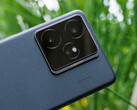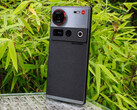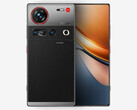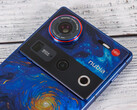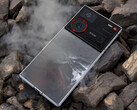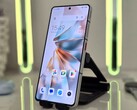Verdict: Good upper-class smartphone with flaws
The Nubia Z70S Ultra combines a retro classic design style for the cameras with modern technology. The workmanship is high-quality, but the artificial leather on the back looks rather plain. Practical controls such as a slide switch and a two-stage camera button underline the focus on photography. The Z70S Ultra is also protected against water and dust in accordance with IP68/IP69 standards.
The camera features are impressive. The large OmniVision sensor with optical image stabilization delivers good photos even in low light. The quality of the ultra-wide angle and zoom lenses is decent as well, and videos can be recorded at up to 8K resolution. The under-display front camera remains inconspicuous, but the image quality is only mediocre.
The software is based on Android 15 with three years of updates, although Nubia remains vague about its update policy. The Z70S Ultra is powered by the Snapdragon 8 Elite SoC, which ensures high performance.
The smartphone runs smoothly in everyday use, but performance decreases under continuous load due to high heat emissions that are also noticeable on the surface of the smartphone. Features such as wireless charging and eSIM support are not available.
Pros
Cons
Price and availability
The Nubia Z70S Ultra can be purchased directly from Nubia Europe but is also available from Amazon.de.
The smartphone can also be had from Nubia International and Amazon US starting from $779 for the 12 GB + 256 GB model.
Table of Contents
- Verdict: Good upper-class smartphone with flaws
- Nubia Z70S Ultra Specifications
- Case, build quality and features: Retro design with dedicated camera button and slider
- Communication and operation: Wide 5G sub-6 support but still no eSIM
- Software and sustainability: Only 3 years of updates
- Cameras: Nubia Z70S Ultra with larger main sensor
- Display: Bright OLED with high-frequency PWM
- Performance, emissions and battery life: Slowed-down Snapdragon 8 Elite
- Notebookcheck's overall impressions of the Nubia Z70S Ultra
- Potential competitors in comparison
The Nubia Z70S Ultra is a slightly improved refresh to the Z70 Ultra. The Z70S Ultra not only offers a new design but also a significantly larger battery.
The sensor of the main camera is now bigger at 1/1.13" compared to the 1/1.56" one in the original Z70 Ultra, with improved image stabilization.
Nubia Z70S Ultra Specifications
Case, build quality and features: Retro design with dedicated camera button and slider
The Nubia Z70S Ultra sports a retro design that is reminiscent of classic cameras. The black model in particular, in combination with the optional camera kit, is strongly reminiscent of a certain German photography specialist.
The workmanship of the smartphone is pleasing. The artificial leather look on the back feels a bit cheap but is pleasant to touch due to the surface texture.
The slide switch opens the camera by default with a choice of three settings — GameSpace, voice recorder, and table lamp, though the slider can also be used as a classic mute switch. There is a dedicated two-stage camera button on the opposite side.
The smartphone is both waterproof and dustproof in accordance with IP68 and IP69 standards.
Communication and operation: Wide 5G sub-6 support but still no eSIM
The Nubia Z70S Ultra offers modern Wi-Fi 7 with tri-band connectivity, meaning it can also use a 6 GHz WLAN. The transfer rates in combination with our Asus ROG Rapture GT-AXE11000 reference router are both fast and stable.
The Z70S Ultra also supports all current mobile communication standards, including 5G sub-6 with a wide range of frequencies. Dual nano-SIM is on board, but there is no eSIM option. The telephony features are good when held to the ear, but noise suppression reaches its limits early on in noisy environments.
For biometric security, an optical fingerprint sensor is integrated under the display, which has good recognition rates and quickly unlocks the Z70S Ultra. Additionally, or alternatively, facial recognition can be used via the front camera, although this is unreliable in dark environments. The linear vibration motor, on the other hand, impresses with its crisp feedback.
| Networking | |
| Nubia Z70S Ultra | |
| iperf3 transmit AXE11000 | |
| iperf3 receive AXE11000 | |
| iperf3 transmit AXE11000 6GHz | |
| iperf3 receive AXE11000 6GHz | |
| Google Pixel 9 Pro XL | |
| iperf3 transmit AXE11000 | |
| iperf3 receive AXE11000 | |
| iperf3 transmit AXE11000 6GHz | |
| iperf3 receive AXE11000 6GHz | |
| Samsung Galaxy S25+ | |
| iperf3 transmit AXE11000 | |
| iperf3 receive AXE11000 | |
| iperf3 transmit AXE11000 6GHz | |
| iperf3 receive AXE11000 6GHz | |
| Honor Magic7 Pro | |
| iperf3 transmit AXE11000 | |
| iperf3 receive AXE11000 | |
| iperf3 transmit AXE11000 6GHz | |
| iperf3 receive AXE11000 6GHz | |
| Average 802.11 a/b/g/n/ac/ax/be | |
| iperf3 transmit AXE11000 | |
| iperf3 receive AXE11000 | |
| iperf3 transmit AXE11000 6GHz | |
| iperf3 receive AXE11000 6GHz | |
| Average of class Smartphone | |
| iperf3 transmit AXE11000 | |
| iperf3 receive AXE11000 | |
| iperf3 transmit AXE11000 6GHz | |
| iperf3 receive AXE11000 6GHz | |
Software and sustainability: Only 3 years of updates
Nubia does not provide any information on the sustainability aspects of the Z70S Ultra. The smartphone comes in a thick, well-filled box with lots of plastic and is shrink-wrapped.
Updates for the Z70S Ultra will be available for three years. Nubia has not provided any information on whether this applies to the major OS updates as well.
Cameras: Nubia Z70S Ultra with larger main sensor
The front camera is located under the display (UDC: Under Display Camera) and is barely recognizable. Unfortunately, the pictures taken with it are blurred and look over-sharpened. Videos are recorded in full HD 30 fps at best and look slightly overexposed and washed out.
The highlight is on the back with three high-resolution sensors. The main sensor now comes from OmniVision but is larger than its predecessor. The new optical image stabilization (OIS) does a visibly better job, but lags for a brief moment during fast video pans.
Photo quality is really good, and decent pictures can still be taken even in low light. The zoom remains usable beyond the optical range. The ultra-wide-angle lens does not produce any aberrations but becomes visibly more pixelated at the edges.
Videos can be recorded at up to 8k 30 fps resolution or in 4k at up to 120 fps. Image stabilization is available up to 4k 60 fps.
Image comparison
Choose a scene and navigate within the first image. One click changes the position on touchscreens. One click on the zoomed-in image opens the original in a new window. The first image shows the scaled photograph of the test device.
Main CameraMain CameraUltra-wide5x ZoomLow light

Display: Bright OLED with high-frequency PWM
The Nubia Z70S Ultra's 6.9-inch AMOLED display is practically identical to that of its predecessor. However, it is not an LTPO panel, which means that the 144 Hz refresh rate can be reduced to 60 Hz at best.
The brightness is 1,393 cd/m² on an average in a pure white display with the ambient light sensor activated. With a reduced white area, we measured up to 1,869 cd/m² in HDR mode. A maximum luminance of 644 cd/m² is available for those who adjust the brightness manually.
The OLED flickers at a constant 60 Hz and shows a homogeneous amplitude curve. We also observed high-frequency PWM dimming, which is supposed to work at up to 2,160 Hz. A slightly higher frequency was measured at minimum brightness.
Complaints are unlikely due to the flickering but cannot be completely ruled out either.
| |||||||||||||||||||||||||
Brightness Distribution: 93 %
Center on Battery: 1388 cd/m²
Contrast: ∞:1 (Black: 0 cd/m²)
ΔE ColorChecker Calman: 2 | ∀{0.5-29.43 Ø4.78}
ΔE Greyscale Calman: 3.6 | ∀{0.09-98 Ø5}
95.3% sRGB (Calman 2D)
Gamma: 2.19
CCT: 6318 K
| Nubia Z70S Ultra AMOLED, 2688x1216, 6.9" | Google Pixel 9 Pro XL OLED, 2992x1344, 6.8" | Samsung Galaxy S25+ Dynamic AMOLED 2X, 3120x1440, 6.7" | Honor Magic7 Pro OLED, 2800x1280, 6.8" | |
|---|---|---|---|---|
| Screen | 53% | 3% | 34% | |
| Brightness middle (cd/m²) | 1388 | 2148 55% | 1371 -1% | 1607 16% |
| Brightness (cd/m²) | 1393 | 2050 47% | 1370 -2% | 1609 16% |
| Brightness Distribution (%) | 93 | 86 -8% | 96 3% | 95 2% |
| Black Level * (cd/m²) | ||||
| Colorchecker dE 2000 * | 2 | 0.5 75% | 2.7 -35% | 0.9 55% |
| Colorchecker dE 2000 max. * | 4.6 | 1.4 70% | 4.2 9% | 1.8 61% |
| Greyscale dE 2000 * | 3.6 | 0.8 78% | 2 44% | 1.7 53% |
| Gamma | 2.19 100% | 2.23 99% | 2.03 108% | 2.24 98% |
| CCT | 6318 103% | 6582 99% | 6450 101% | 6346 102% |
* ... smaller is better
| Display / APL18 Peak Brightness | |
| Google Pixel 9 Pro XL | |
| Samsung Galaxy S25+ | |
| Nubia Z70S Ultra | |
| Honor Magic7 Pro | |
| Display / HDR Peak Brightness | |
| Honor Magic7 Pro | |
| Samsung Galaxy S25+ | |
| Google Pixel 9 Pro XL | |
| Nubia Z70S Ultra | |
Screen Flickering / PWM (Pulse-Width Modulation)
| Screen flickering / PWM detected | 60 Hz Amplitude: 14.85 % Secondary Frequency: 2173 Hz | ||
The display backlight flickers at 60 Hz (worst case, e.g., utilizing PWM) . The frequency of 60 Hz is very low, so the flickering may cause eyestrain and headaches after extended use. In comparison: 53 % of all tested devices do not use PWM to dim the display. If PWM was detected, an average of 8108 (minimum: 5 - maximum: 343500) Hz was measured. | |||
Measurement series with fixed zoom level and different brightness settings (The amplitude curve at minimum brightness looks flat, but this is due to the scaling. The info box shows the enlarged version of the amplitude at minimum brightness)
Display Response Times
| ↔ Response Time Black to White | ||
|---|---|---|
| 0.94 ms ... rise ↗ and fall ↘ combined | ↗ 0.4735 ms rise | |
| ↘ 0.4705 ms fall | ||
| The screen shows very fast response rates in our tests and should be very well suited for fast-paced gaming. In comparison, all tested devices range from 0.1 (minimum) to 240 (maximum) ms. » 3 % of all devices are better. This means that the measured response time is better than the average of all tested devices (20.2 ms). | ||
| ↔ Response Time 50% Grey to 80% Grey | ||
| 1.12 ms ... rise ↗ and fall ↘ combined | ↗ 0.4925 ms rise | |
| ↘ 0.6305 ms fall | ||
| The screen shows very fast response rates in our tests and should be very well suited for fast-paced gaming. In comparison, all tested devices range from 0.165 (minimum) to 636 (maximum) ms. » 4 % of all devices are better. This means that the measured response time is better than the average of all tested devices (31.6 ms). | ||
Performance, emissions and battery life: Slowed-down Snapdragon 8 Elite
With the Snapdragon 8 Elite SoC and 12 GB of RAM, the Nubia Z70S Ultra has one of the most powerful SoCs on board at the time of testing. The system's performance gives no cause for criticism in everyday use, but the GPU and browser benchmarks show that the Z70S Ultra falls short of expectations.
This could be due to poor thermal management, as the smartphone gets extremely hot in the stress tests. We measure surface temperatures of just under 54 °C in places, even though the SoC throttles down considerably at times. At least no condensation forms behind the camera lens this time.
The speakers of the Nubia smartphone deliver decent output, but sound somewhat hollow at high volumes.
The 6,600 mAh battery promises long battery life. In the practical WLAN test with display brightness adjusted to 150 nits, the Z70S Ultra achieves a very good result. However, given the size of the battery, we feel it could have delivered even longer run times.
| Geekbench AI | |
| Single Precision TensorFlow NNAPI 1.2 | |
| Samsung Galaxy S25+ | |
| Honor Magic7 Pro | |
| Average of class Smartphone (51 - 2472, n=53, last 2 years) | |
| Average Qualcomm Snapdragon 8 Elite (255 - 738, n=15) | |
| Nubia Z70S Ultra | |
| Half Precision TensorFlow NNAPI 1.2 | |
| Average of class Smartphone (51 - 9453, n=53, last 2 years) | |
| Samsung Galaxy S25+ | |
| Honor Magic7 Pro | |
| Average Qualcomm Snapdragon 8 Elite (218 - 734, n=15) | |
| Nubia Z70S Ultra | |
| Quantized TensorFlow NNAPI 1.2 | |
| Average of class Smartphone (123 - 13084, n=53, last 2 years) | |
| Samsung Galaxy S25+ | |
| Honor Magic7 Pro | |
| Average Qualcomm Snapdragon 8 Elite (555 - 1708, n=15) | |
| Nubia Z70S Ultra | |
(-) The maximum temperature on the upper side is 53.7 °C / 129 F, compared to the average of 35.2 °C / 95 F, ranging from 21.9 to 247 °C for the class Smartphone.
(-) The bottom heats up to a maximum of 49.2 °C / 121 F, compared to the average of 34 °C / 93 F
(+) In idle usage, the average temperature for the upper side is 29.5 °C / 85 F, compared to the device average of 32.9 °C / 91 F.
3DMark Steel Nomad Stress Test
| 3DMark | |
| Wild Life Stress Test Stability | |
| Google Pixel 9 Pro XL | |
| Honor Magic7 Pro | |
| Samsung Galaxy S25+ | |
| Nubia Z70S Ultra | |
| Steel Nomad Light Stress Test Stability | |
| Nubia Z70S Ultra | |
| Google Pixel 9 Pro XL | |
| Honor Magic7 Pro | |
| Samsung Galaxy S25+ | |
Nubia Z70S Ultra audio analysis
(+) | speakers can play relatively loud (86.9 dB)
Bass 100 - 315 Hz
(-) | nearly no bass - on average 23.7% lower than median
(±) | linearity of bass is average (11.7% delta to prev. frequency)
Mids 400 - 2000 Hz
(±) | higher mids - on average 6% higher than median
(+) | mids are linear (6.9% delta to prev. frequency)
Highs 2 - 16 kHz
(±) | higher highs - on average 5.5% higher than median
(+) | highs are linear (5.7% delta to prev. frequency)
Overall 100 - 16.000 Hz
(±) | linearity of overall sound is average (18.8% difference to median)
Compared to same class
» 22% of all tested devices in this class were better, 10% similar, 68% worse
» The best had a delta of 11%, average was 35%, worst was 134%
Compared to all devices tested
» 42% of all tested devices were better, 8% similar, 50% worse
» The best had a delta of 4%, average was 24%, worst was 134%
Samsung Galaxy S25+ audio analysis
(+) | speakers can play relatively loud (90.9 dB)
Bass 100 - 315 Hz
(-) | nearly no bass - on average 18.3% lower than median
(+) | bass is linear (6.5% delta to prev. frequency)
Mids 400 - 2000 Hz
(±) | higher mids - on average 6.3% higher than median
(+) | mids are linear (5.2% delta to prev. frequency)
Highs 2 - 16 kHz
(±) | higher highs - on average 6.7% higher than median
(+) | highs are linear (4.6% delta to prev. frequency)
Overall 100 - 16.000 Hz
(±) | linearity of overall sound is average (16.8% difference to median)
Compared to same class
» 8% of all tested devices in this class were better, 7% similar, 85% worse
» The best had a delta of 11%, average was 35%, worst was 134%
Compared to all devices tested
» 29% of all tested devices were better, 7% similar, 64% worse
» The best had a delta of 4%, average was 24%, worst was 134%
| Battery runtime - WiFi v1.3 | |
| Nubia Z70S Ultra | |
| Google Pixel 9 Pro XL | |
| Samsung Galaxy S25+ | |
| Honor Magic7 Pro | |
Notebookcheck's overall impressions of the Nubia Z70S Ultra
While the Nubia Z70S Ultra is a powerful smartphone with an unusual retro look, good camera setup, and long battery life, compromises have to be made when it comes to updates and heat emissions.
Nubia Z70S Ultra
- 06/23/2025 v8
Daniel Schmidt
Potential competitors in comparison
Image | Model / Review | Price | Weight | Drive | Display |
|---|---|---|---|---|---|
| Nubia Z70S Ultra Qualcomm Snapdragon 8 Elite ⎘ Qualcomm Adreno 830 ⎘ 12 GB Memory, 256 GB | Amazon: 1. $10.99 Anbzsign [2+2 Pack for ZTE n... 2. $9.88 WUNIAK Screen Protector for ... 3. $9.29 Anbzsign [2 Pack for ZTE nub... List Price: 769€ | 228 g | 256 GB UFS 4.0 Flash | 6.85" 2688x1216 431 PPI AMOLED | |
| Google Pixel 9 Pro XL Google Tensor G4 ⎘ ARM Mali-G715 MP7 ⎘ 16 GB Memory, 256 GB | Amazon: 1. $749.00 Google Pixel 9 Pro XL - Unlo... 2. $749.00 Google Pixel 9 Pro XL - Unlo... 3. $9.99 OMOTON 3+2 Pack for Google P... List Price: 1299€ | 221 g | 256 GB UFS 3.1 Flash | 6.80" 2992x1344 482 PPI OLED | |
| Samsung Galaxy S25+ Qualcomm Snapdragon 8 Elite for Galaxy ⎘ Qualcomm Adreno 830 ⎘ 12 GB Memory, 256 GB | Amazon: 1. SAMSUNG Galaxy S25 Ultra, 25... 2. $804.66 SAMSUNG Galaxy S25 Edge Phon... 3. $709.50 Samsung Galaxy S25 5G SM-S93... List Price: 1149 Euro | 190 g | 256 GB UFS 4.0 Flash | 6.70" 3120x1440 513 PPI Dynamic AMOLED 2X | |
| Honor Magic7 Pro Qualcomm Snapdragon 8 Elite ⎘ Qualcomm Adreno 830 ⎘ 12 GB Memory, 512 GB | Amazon: 1. $11.99 Ibywind for Honor Magic7 Pro... 2. $9.99 Anbzsign (2+2 Pack) for Hono... 3. $10.79 AKABEILA [2 Pack Privacy Scr... List Price: 1300€ | 223 g | 512 GB UFS 4.0 Flash | 6.80" 2800x1280 453 PPI OLED |
Transparency
The selection of devices to be reviewed is made by our editorial team. The test sample was provided to the author as a loan by the manufacturer or retailer for the purpose of this review. The lender had no influence on this review, nor did the manufacturer receive a copy of this review before publication. There was no obligation to publish this review. As an independent media company, Notebookcheck is not subjected to the authority of manufacturers, retailers or publishers.
This is how Notebookcheck is testing
Every year, Notebookcheck independently reviews hundreds of laptops and smartphones using standardized procedures to ensure that all results are comparable. We have continuously developed our test methods for around 20 years and set industry standards in the process. In our test labs, high-quality measuring equipment is utilized by experienced technicians and editors. These tests involve a multi-stage validation process. Our complex rating system is based on hundreds of well-founded measurements and benchmarks, which maintains objectivity. Further information on our test methods can be found here.




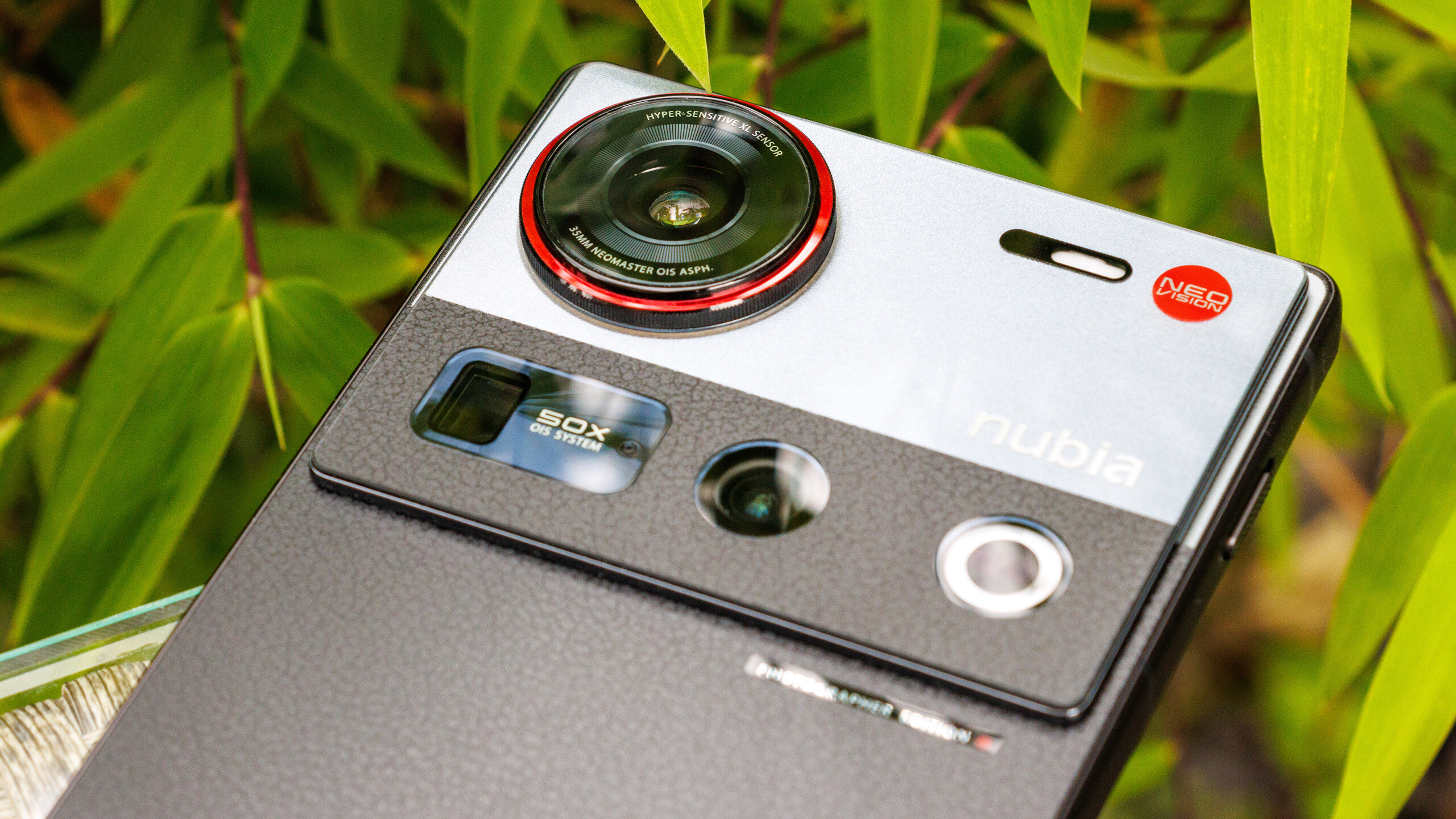

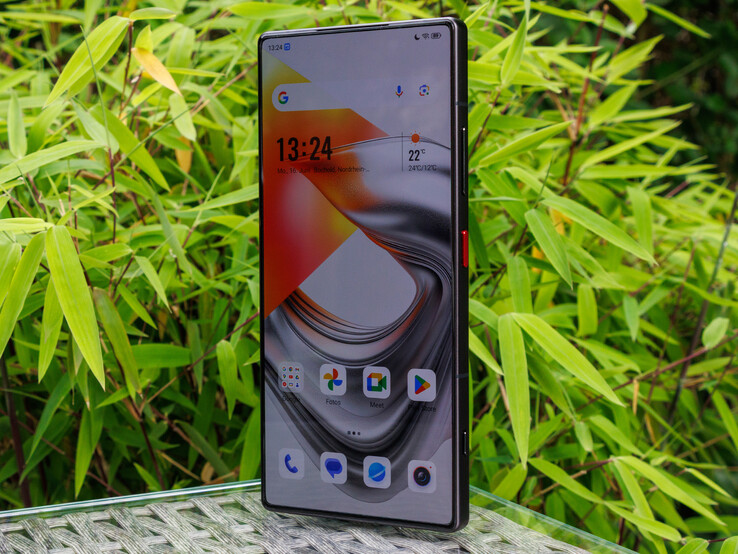





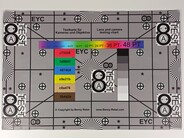



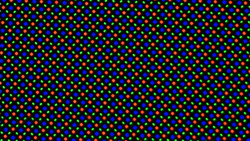
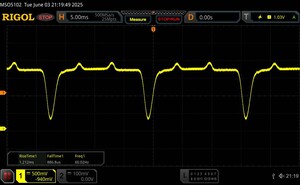










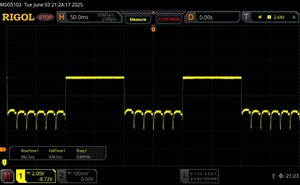

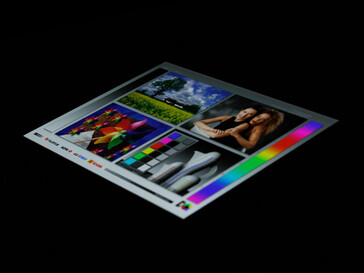
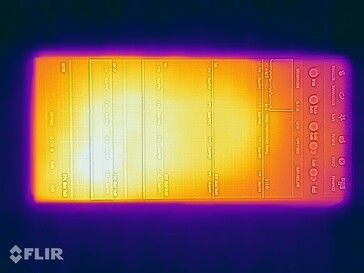
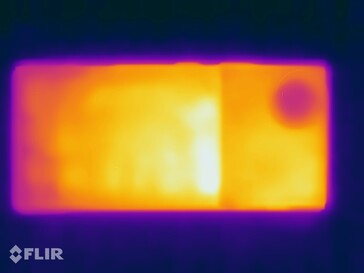
 Total Sustainability Score:
Total Sustainability Score: 


